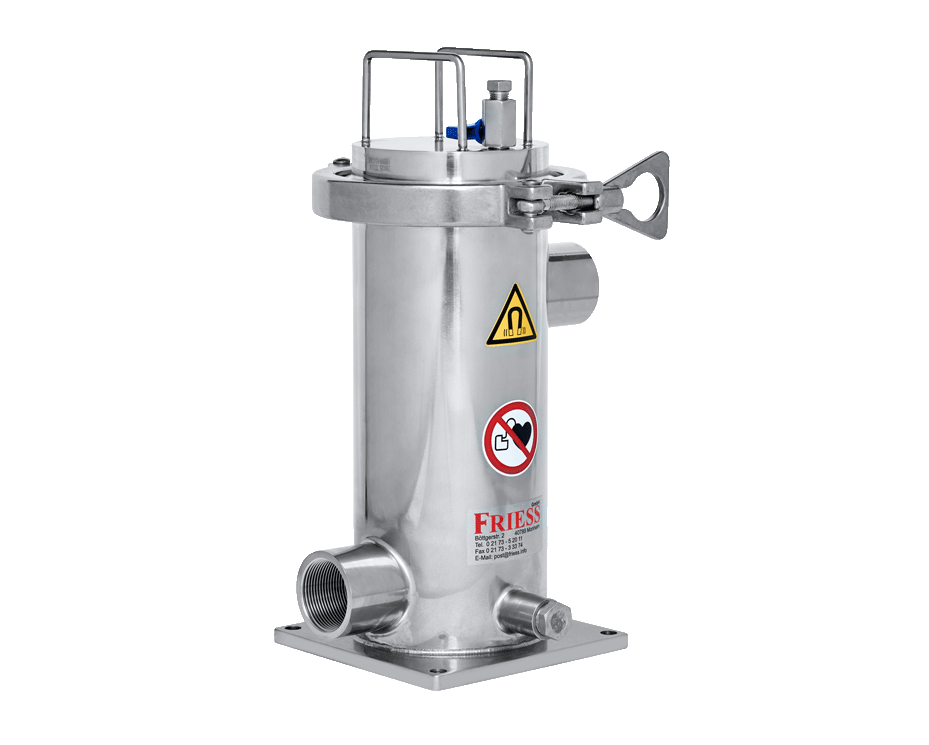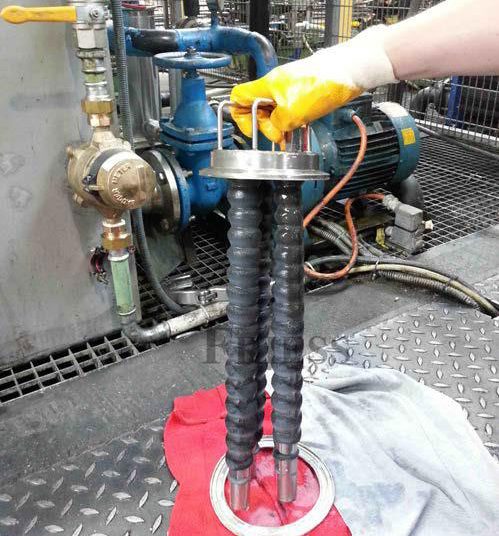Magnetic Filters Reduce the Bacterial Count in Cooling LubricantOptimisation of Cast Iron Machining using FRIESS Magnetic Filters
Casting iron parts are regularly machined at a production company. The chips produced in the process are flushed out of the machine by the cooling lubricant. Large chips sink to the bottom of the collection container and are transported away via a scraper belt conveyor. A large number of small chips and particles are pumped to blet filter while suspendended in the cooling lubricant. Larger chips settle on the surface of the belt filter and are discharged with the belt.
The Problem
Since a lot of ultra-fine particles are produced during the machining of cast iron and these very fine particles below 50 μm are not removed by the belt filter, the ultra-fine particles were able to accumulate unhindered in the tank of apparently cleaned cooling lubricant below the belt filter.
After several months of operation, the interior of the machine tool was covered with black deposits and was heavily contaminated.
The operator then checked the cooling lubricant. It was found that despite the existing filtration, there were still a lot of particles in the cooling lubricant. When the cooling lubricant was then changed, it was found that the bottom of the tank was covered with a centimetres thick layer of black sludge.
This sludge and the high particle load were the cause of the extremely high germ load in the cooling lubricant, which repeatedly made it necessary to add bactericide.
The Solution

To improve the situation, the operator examined several options. The most obvious solution was to use a magnetic roll. However, since the magnetic roll are mainly equipped with magnetic segments, the field force of the magnetic rollers is between 2500 Gauss and 3500 Gauss.
This is sufficient to remove particles of 50 μm or more from the cooling lubricant. Based on this data, it was clear that the magnetic roll could not bring about any real improvement.
As a result, the operator decided to use an FMF 310/3 magnetic filter from FRIESS on a trial basis. Since the magnetic field force of these magnetic filters is over 10,000 Gauss and the flow guidance in the magnetic filter housing is optimised for the removal of ultra-fine particles, particles of down to 1 μm in size can be removed from the cooling lubricant with this magnetic filter.
In the first test application, the magnetic filter had to be cleaned after only a few hours of operation.
The Result

After repeated cleaning, the cleaning interal of the magnetic filter was increased to 24 hours and later to 48 hours. By using the magnetic filter, the previously disrupting micro-particles are now safely and reliably removed. The interior of the machine is now much cleaner. There are no more black deposits. Even after more than a year of use, the bacterial count in the cooling lubricant is stable at a low level without the addition of bactericides.
Due to this very convincing result, further machines in the company have already been equipped with the FMF 310/3 magnetic filter.
- over 10,000 Gauss and the flow guidance in the magnetic filter
- housing is optimised for the removal of ultra-fine particles,
- particles of down to 1 μm in size can be removed from the cooling lubricant
